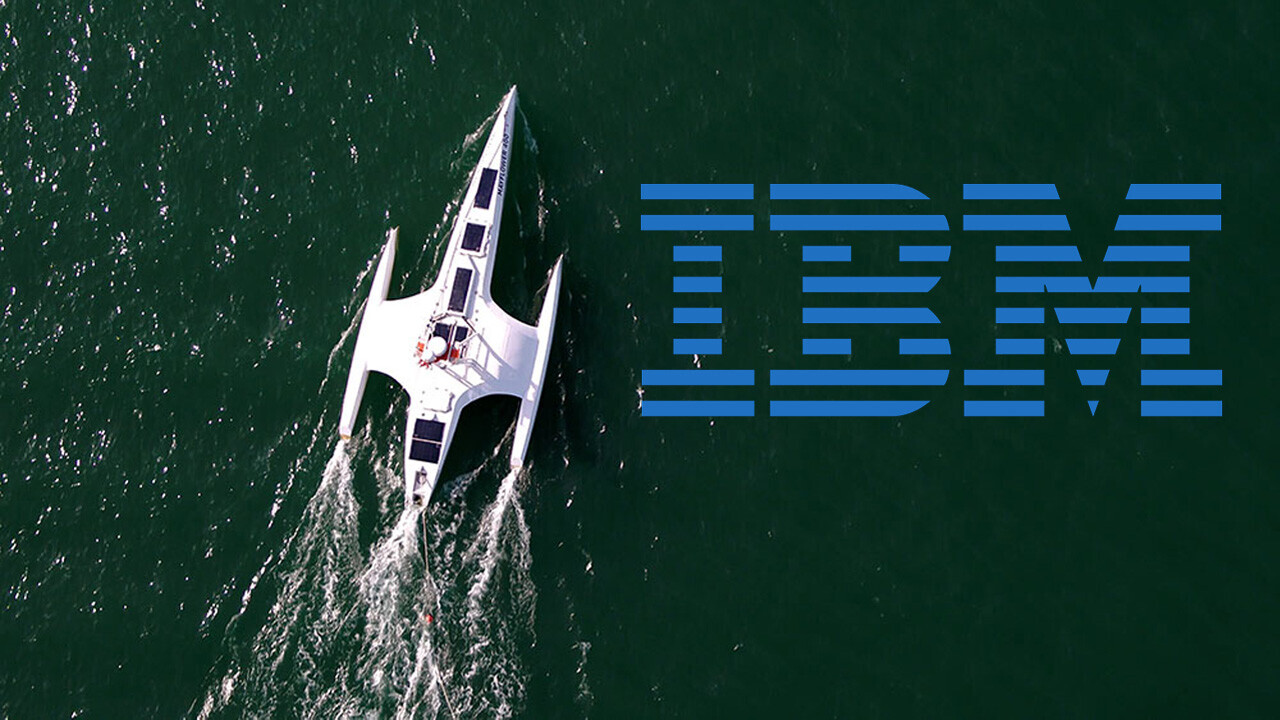
An uncrewed vessel dubbed “Mayflower” recently completed the first fully autonomous transatlantic journey on the open sea.
Powered by IBM’s AI, the ship was designed and built by non-profit maritime research organization Promare. Its purpose is to boldly go where no robot has gone before, and collect oodles of data from our oceans.
Up front: IBM isn’t exactly in the autonomous boating business. We’re probably not going to see Big Blue selling robo-yachts anytime soon.
Instead, IBM’s involvement is more about showcasing the robust nature of its machine learning tools.
Per an IBM white paper:
Just as IBM has been instrumental in the development of the Mayflower’s AI Captain, it has also helped global enterprises solve many critical operational challenges. When used in conjunction with our DecisionsFirst™ approach, IBM solutions can help your organization achieve positive business outcomes by streamlining business processes, minimizing manual effort, integrating AI-based insights for better decision-making, and solving inefficiencies—especially for customers.
The system IBM tacked onto the Mayflower vessel is, essentially, a CEO suite shoehorned into a sailing machine.
Background: Most people think of driverless cars when it comes to autonomous vehicles, but the challenges are entirely different on the open ocean.
Driverless cars rely on infrastructure. They use various landmarks such as roads and signs to navigate and avoid obstacles.
In the ocean, there are no traffic lights or lanes. The Mayflower has to rely on its suite of six cameras and more than 30 sensors to avoid collisions with other vessels and marine life.
To this end, the ship’s AI captain relies on many of the same tools IBM offers to its business partners. The Mayflower’s ability to transit an entire ocean entirely autonomously — per IBM, the AI system is entirely contained within the vessel — represents the challenge of applying industry-wide AI solutions to bespoke challenges.
Per an IBM blog post:
The AI Captain has learned from data, postulates alternative choices, assesses and optimizes decisions, manages risk, and refines its knowledge through feedback, all while maintaining the highest ethical standards – which is similar to how machine learning is applied across industries like transportation, financial services, and healthcare. And furthermore, there’s a transparent record of the AI Captain’s decision-making process that can help us humans understand why the captain made certain decisions… transparency that is all too important in these heavily regulated industries.
Quick take: There are no mystical AI panaceas waiting for enterprising CEOs to stumble upon like them like Jack finding his magic beans.
What IBM’s done with the Mayflower experiment demonstrates the power of narrow AI solutions for massive problems. By breaking down the stack of challenges faced by the ship during its transit, IBM’s AI was able to identify challenges requiring a decision, and then rely on its business optimization models to execute operations within the parameters and rules it was given.
In business, this translates to the ability to insert new sets of rules — such as policy or regulatory changes — at scale without having to implement or train an entirely new AI stack.
It’s decision making at the scale and speed necessary to navigate an ocean or an industry in real time.
It’ll be interesting to see what kind of science the Mayflower autonomous ship gets up to once it’s done making headlines and settles into its ultimate research routine.
Get the TNW newsletter
Get the most important tech news in your inbox each week.




